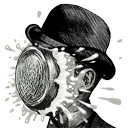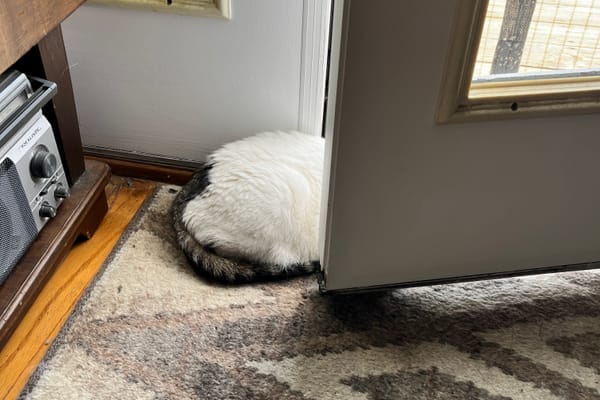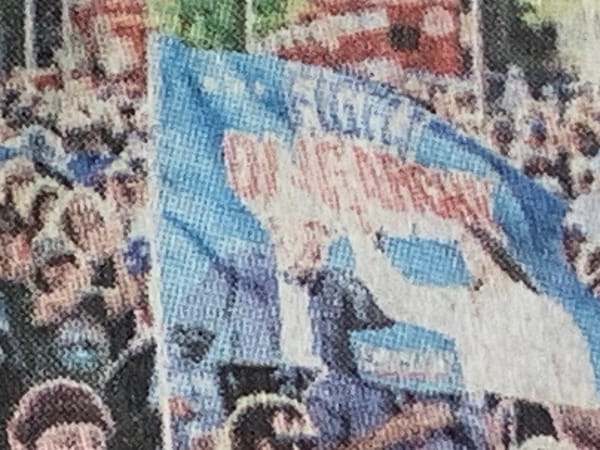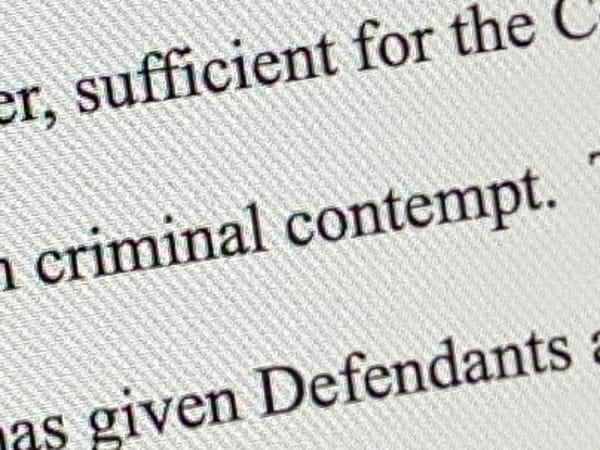Cops shoot people
Indignity Vol. 4, No. 160
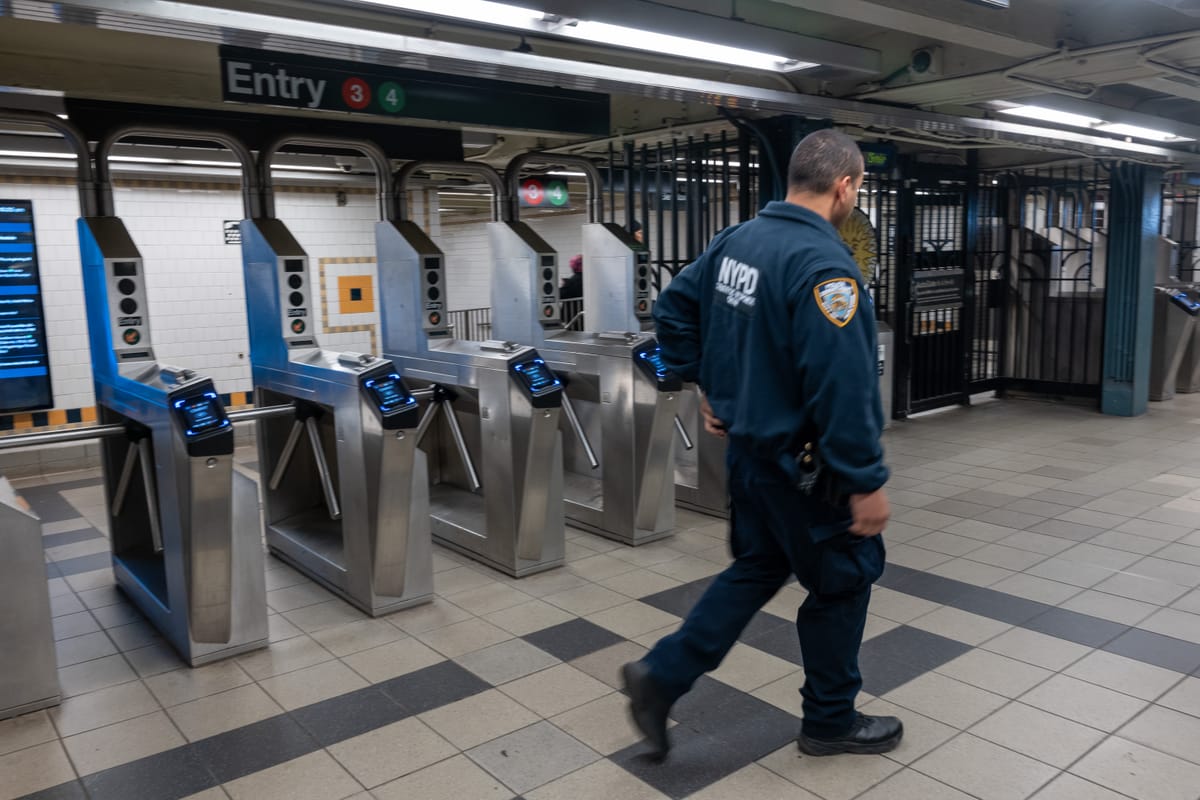
LAW & ORDER DEP'T.
What Makes You Feel Safe on the Subway
YESTERDAY, TWO OFFICERS of the New York Police Department opened fire at the Sutter Avenue stop on the L train, shooting a 49-year-old train passenger in the head. The police also shot another passenger, a 26-year-old in the leg, and one of them shot the other in the armpit. And they shot the person they were trying to shoot at, a 37-year-old man who had allegedly entered the station without paying a fare.
The would-be fare-beater, police said, had a knife. The 49-year-old passenger the police shot in the head, who is reportedly in critical condition, did not have a knife. The 26-year-old passenger they shot did not have a knife, either.
(The fare-beater's knife reportedly then somehow disappeared from the scene.)
Earlier this month, the New York Times opinion columnist Pamela Paul wrote about the problem of fare-beating and disorder in the transit system, and about the straightforward, commonsense solution she favors:
The truth is passengers don’t pay because they can get away with it. The harder truth is that the city lets them. And the hardest truth is that the best solution is more policing.
There was nothing new in the argument. Paul's role in the editorial mix is to express the most reactionary received prejudices among the people who call themselves liberal, and here that meant reaching back to last century for the broken-windows theory of policing, as laid out by "the social scientist James Q. Wilson and the criminology professor George Kelling in a 1982 essay in The Atlantic." The idea, or the version of the idea that caught on, was that the authorities and the citizenry had become too tolerant of low-grade disorder, and that visible low-grade disorder, as Paul wrote, "invites graver forms of crime"—and so, by not-quite-logical extension, the cops should fight disorder as if it were crime.
How this would fix the windows, exactly, went underexplained. Cops are not glaziers, but they were willing enough to jack people up for being rowdy, or for drinking from brown bags, or for being the wrong color in the wrong neighborhood, or simply for being young and Black and trying to get from Point A to Point B. Broken windows "became intermingled in the public’s mind with the disgraced policy of 'stop and frisk,'" Paul wrote, as if that public impression had come out of nowhere. Still, crime went down—if not exactly in sync with the crackdowns, at least in a way where people could point to the bad times before and the good times afterward.
The lesson is that the cops need to treat petty crimes like serious crimes. With the transit system serving as a sort of catch basin for the city's pandemic-era ill will and distress, Mayor Eric Adams and Governor Kathy Hochul pumped extra police into the subway last year, spending $151 million on overtime to catch, as Hell Gate calculated, $104,000 worth of fare evaders. But catching those fare evaders is supposed to restore confidence in the safety and security of passengers.
And this was why, in pursuit of a $2.90 fare—in pursuit of everything that fare was supposed to represent—the NYPD officers reportedly chased their suspect up a flight of stairs, followed him onto an arriving L train, shot him with tasers, and eventually began firing their guns in a crowded public space. Public order demanded no less.
Before her preferred theory was so visibly put into action, Paul wrote:
Opponents of increased law enforcement, like the fantasists who advocate prison abolition, seem to operate in a world in which people always act according to their best instincts. It’s an elitist attitude that betrays a lack of experience with crime-ridden environments.
This is the premise that held strong-arm liberalism together through the shocks of George Floyd's killing and the protests of 2020—that the people who criticize policing are being unrealistic. The onus to face facts rarely goes the other way, to address the difference between the police as an ideal, theoretical force for order and the police as an actual force for force.
Thus the New York Daily News headline for what happened at Sutter Avenue was "NYPD officer, 3 others shot during showdown with knife-wielding fare-beater at Brooklyn L subway station" (a second-day revision downgraded "knife-wielding" to the less specifically active "armed"). The New York Post went with "Bloody clash: NYPD cop shot, 3 others injured as suspect comes at police with knife in Brooklyn." There was a clash, a showdown, a moment of terrible, regrettable disorder. The police did their job. Their job left a bullet in a subway rider's head.

OUTSIDE READINGS DEP'T.

OVER AT HIS newsletter, How Things Work, friend of Indignity Hamilton Nolan wrote about what it means to cast a vote in a political system where candidates almost never reflect your values:
For the most part, it is wrong to think of elections as contests between “good” and “bad” candidates. With few exceptions, it is more accurate to divide most politicians into two broad categories: Enemies, and Cowards. The enemies are those politicians who are legitimately opposed to your policy goals. The cowards are those politicians who may agree with your policy goals, but will sell you out if they must in order to protect their own interests. Embrace the idea that we are simply pushing to elect the cowards, rather than the enemies. Why? Because the true work of political action is not to identify idealized superheroes to run for office. It is, instead, to create the conditions in the world that make it safe for the cowards to vote the right way.

WEATHER REVIEWS
New York City, September 15, 2024
★★★★ The humidity that had weighted the dark hours of the morning burned off swiftly under the sun. Air conditioners still droned all around, even as the atmosphere was easy to move in. A young cyclist rode down Central Park West in an endless and inescapable wheelie, the empty front fork of the bike thrusting out in space. A helicopter growled from a static position in the sky further uptown, then came clattering over the Park. Birders stalked the edge of the Pool. As cardinals gave their sharp, familiar chirp, a small, drab warbler dropped from a branch down into a thicket and then fluttered up again. A curled dry leaf came gliding and veering down, big as a bird itself. Bright squiggles of fractus squirmed along behind a slowly drifting cloud mass. A fluffy white dog stood on picnic blankets, with drifts of combed-out white dog fur on the grass beside it. There was still a warm smell of grass on the Great Hill, but it no longer had the juicy quality of full summer. A man made a hoop with his arms for a dog to jump through. Down outside the Park again, a woman guided two girls on rollerblades, one holding each of her hands, over the root-buckled sidewalk.

EASY LISTENING DEP'T.
HERE IS TODAY'S Indignity Morning Podcast, now with transcript.
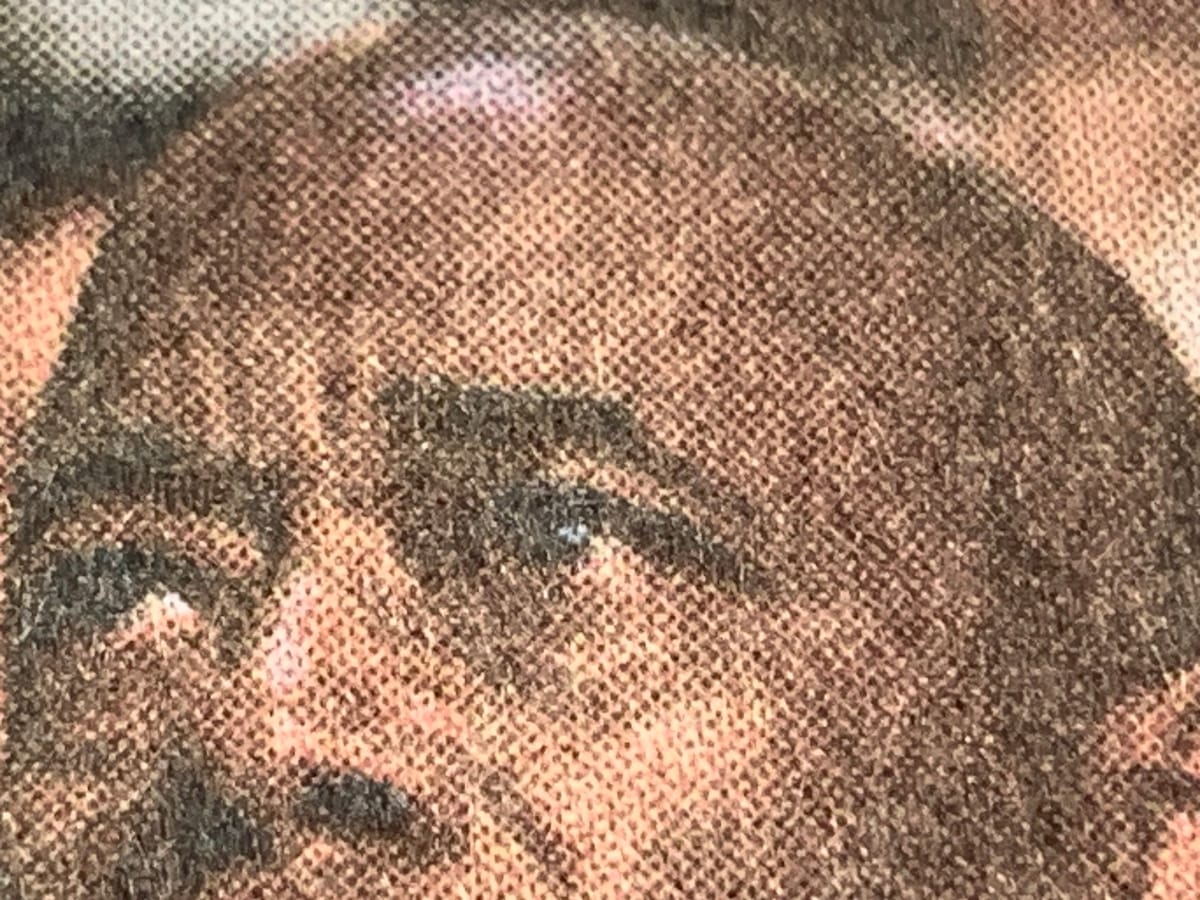
Click on this box to find the Indignity Morning Podcast archive.
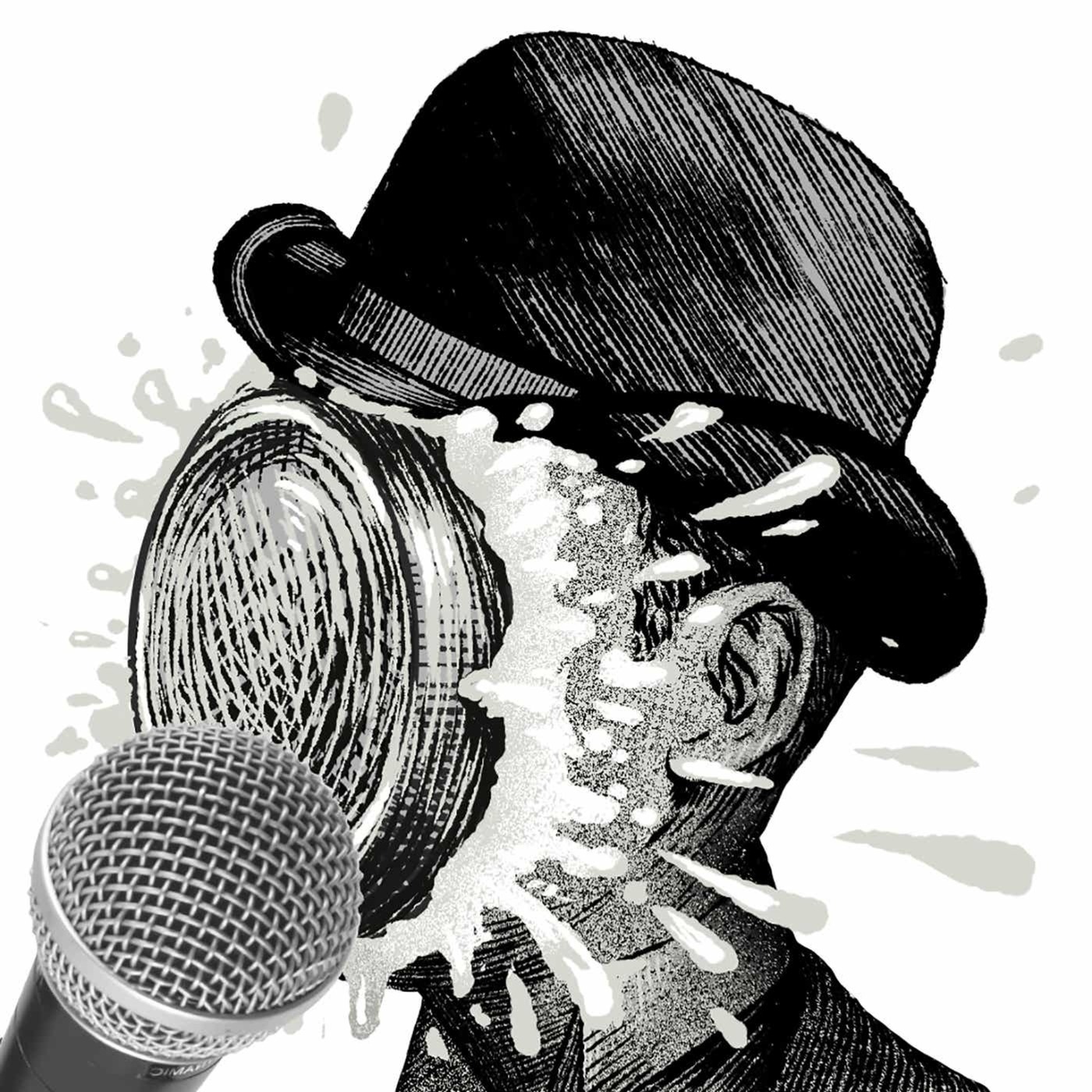

ADVICE DEP'T.
GOT SOMETHING YOU need to justify to yourself, or to the world at large? Other columnists are here to judge you, but The Sophist is here to tell you why you’re right. Direct your questions to The Sophist, at indignity@indignity.net, and get the answers you want.

SANDWICH RECIPES DEP'T.
WE PRESENT INSTRUCTIONS in aid of the assembly of a sandwich selected from The Swedish, French, American Cook Book, by Mrs. Maria Mathilda Ericsson Hammond, published in 1918, and now in the Public Domain and available at archive.org for the delectation of all.
Cream Cheese Sandwich à la Philadelphienne
Sandwiches au Fromage à la Creme, à la Philadelphienne
Stir one tablespoon butter to a cream; add a half pound of cream cheese, pepper and salt; stir again. Cut bread very thin; spread with the cheese mixture; add another buttered slice of bread on the top; cut in any shape desired. These can also be rolled and garnished with pimentos. Serve with the salad.
If you decide to prepare and attempt to enjoy a sandwich inspired by this offering, be sure to send a picture to indignity@indignity.net.

MARKETING DEP'T.
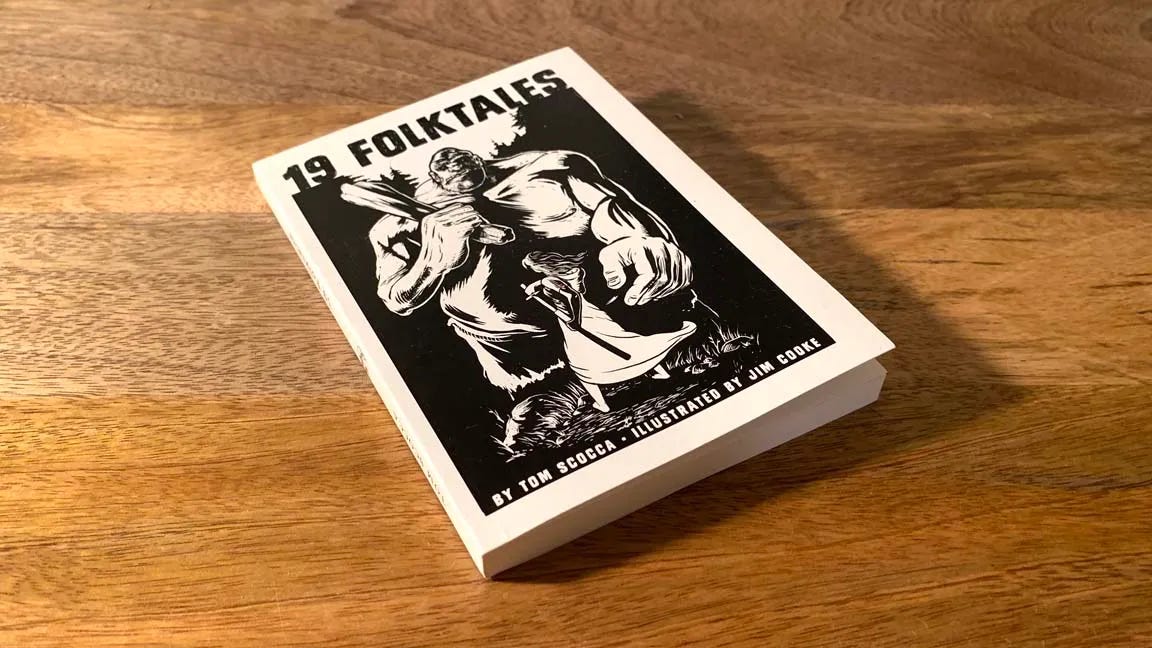
Supplies are really and truly running low of the second printing of 19 FOLK TALES, still available for gift-giving and personal perusal! Sit in the crushing heat with a breezy collection of stories, each of which is concise enough to read before the thunderstorms start.

ZERO COPIES LEFT: HMM WEEKLY MINI-ZINE, Subject: GAME SHOW, Joe MacLeod’s blah blah blah, etc., of his Total Experience of a Journey Into Television, expanded from the original published account that can still found here at Hmm Daily, but you know what? No more printed, expanded, more fun, tangible, printed-on-paper zine! No more! ALL GONE! Thank you! People like to reminisce about this special MINI ZINE, and how it featured other viewpoints related to an appearance on the teevee game show Who Wants to Be A Millionaire, but now it is just a memory, no longer available for purchase at SHOPULA. However, there are many other fine things to read over there! Go take a look!



